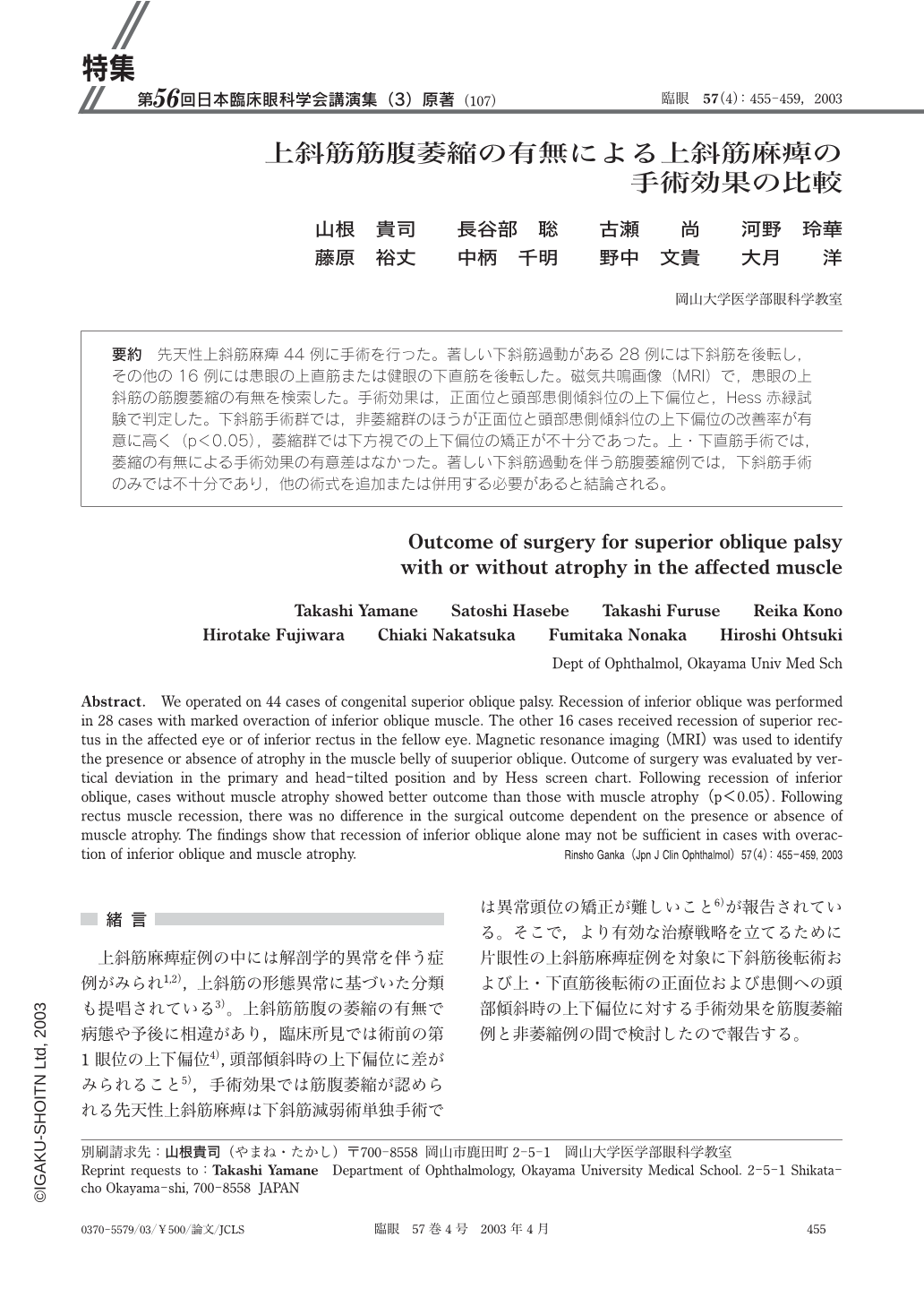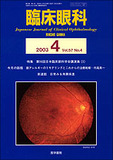Japanese
English
- 有料閲覧
- Abstract 文献概要
- 1ページ目 Look Inside
要約 先天性上斜筋麻痺44例に手術を行った。著しい下斜筋過動がある28例には下斜筋を後転し,その他の16例には患眼の上直筋または健眼の下直筋を後転した。磁気共鳴画像(MRI)で,患眼の上斜筋の筋腹萎縮の有無を検索した。手術効果は,正面位と頭部患側傾斜位の上下偏位と,Hess赤緑試験で判定した。下斜筋手術群では,非萎縮群のほうが正面位と頭部患側傾斜位の上下偏位の改善率が有意に高く(p<0.05),萎縮群では下方視での上下偏位の矯正が不十分であった。上・下直筋手術では,萎縮の有無による手術効果の有意差はなかった。著しい下斜筋過動を伴う筋腹萎縮例では,下斜筋手術のみでは不十分であり,他の術式を追加または併用する必要があると結論される。
Abstract. We operated on 44 cases of congenital superior oblique palsy. Recession of inferior oblique was performed in 28 cases with marked overaction of inferior oblique muscle. The other 16 cases received recession of superior rectus in the affected eye or of inferior rectus in the fellow eye. Magnetic resonance imaging(MRI)was used to identify the presence or absence of atrophy in the muscle belly of suuperior oblique. Outcome of surgery was evaluated by vertical deviation in the primary and head-tilted position and by Hess screen chart.Following recession of inferior oblique,cases without muscle atrophy showed better outcome than those with muscle atrophy(p<0.05). Following rectus muscle recession,there was no difference in the surgical outcome dependent on the presence or absence of muscle atrophy. The findings show that recession of inferior oblique alone may not be sufficient in cases with overaction of inferior oblique and muscle atrophy.

Copyright © 2003, Igaku-Shoin Ltd. All rights reserved.


